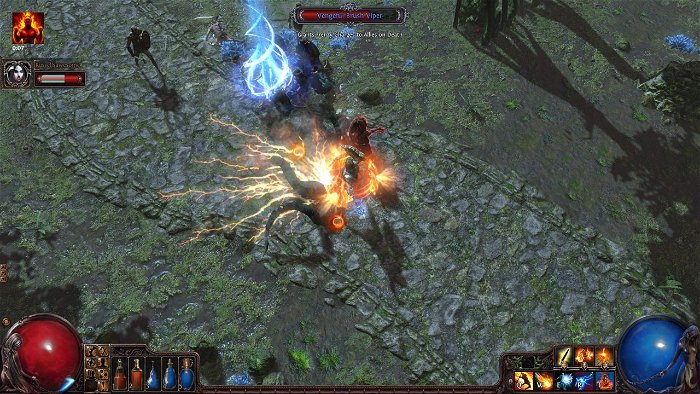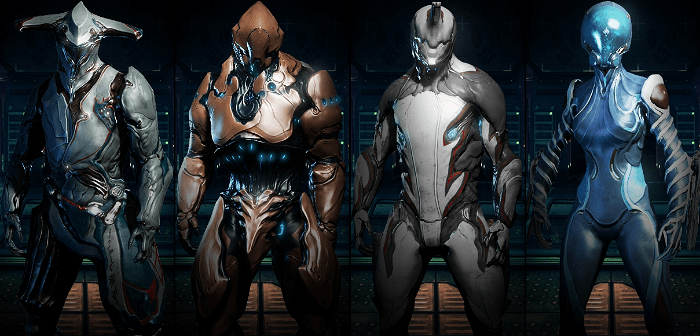Free-to-play games – or rather, games that have no initial purchase cost – aren’t new. But they’re becoming more prolific. Micro-transactions – purchasing options or items within a game for real money – goes as far back as Everquest and its ‘gold farmers’, selling in-game currency and items for cash. Even Guild Wars 2, a major online RPG, makes use of micro-transactions, though it isn’t a free game.
But there are limits to what we’ll spend money on, and there are expectations that come with the requirement to pay. High-quality free games have arrived – though our definition of ‘high-quality’ has to remain constant, even without the investment of our hard-earned cash.
I’m speaking completely from a Western perspective, as that’s where my knowledge base lies. As such, there’s a whole other discussion about this that Eastern-hemisphere players can have, that I entirely encourage as a possible comparison or counterpoint. For example: Pay-to-win (referring to being able to purchase abilities or items that offer decisive advantage over free players, or to unlock major sections of the game’s content to play) are dirty words in in the Western world. According the David Chui of Kongregate, at his panel at the Montreal International Games Summit, it’s far less so in Asia, where such models are the norm; however, Western developers are hesitant to use this strategy in their own groups.

I can’t speak for everyone, but the general consensus is that it’s not sportsmanlike for a person to throw money at a game to excel at it, rather than earning it via skill or time like others. This feels tremendously exclusionary, particularly for players for whom money is a ready and immediate concern.
Games are, above all else, expensive. A typical games launches with a $60-$70 price tag, with subscription fees and DLCs depending on the genre. With that amount of investment, we’re more critical of any flaw we see in the game. Buggy games get more of a pass with indie titles, which are often much cheaper: free-to-play games can get greater leeway, within reason (if the game is unplayable without any micro-transaction payments, then it’s not worth playing).
To use some personal examples, I’ve been playing Path of Exile lately, which is a free-to-play game. It’s quite a lot of fun. But the thing that bothers me about it is that, despite a conspicuous micro-transaction button, complete with dollar sign framed in green, I can’t find any reason to buy anything. Everything is cosmetic in nature – either little pets that follow you around, or re-skinning items. Most of it is not worth the effort unless you’ve got the in-game currency lying around. The game is quite great, and fun to play – much like Diablo 2, which is it obviously a shout-out to – but the game can be played and beaten without buying anything. I’ve never seen an advertisement, so I’m not sure where they plan to get money for this.

I’ve also reviewed Dust 541, a free-to-play first-person shooter by CCP, set in the universe of the popular poster child for “serious business”, EVE Online. The Aurum currency, purchased with real-world money, isn’t required to win in battles – the actual equipment it purchases weren’t particularly stronger than its own when I played it. The main draw, however, was the experience boosters, giving you more skill points in order to progress faster. For me, this is somewhat pointless, as I’ll get this by playing the game (I’m dying all the time in an FPS at the best of times). Also, if you die with Aurum gear, you lose it, so your money vanishes (save for the blueprint items, which are more economical as they don’t require you keep spending real-life currency). This potential to lose real money makes consequences more real, but also makes the risk less acceptable. It had a few bugs with the terrain that inhibited your movement, but was a solid game, and while I personally don’t see the appeal in the boosters, I can see how someone might want to speed up the skill progression (which is entirely based on flat time, rather than how much you play, so you’re waiting a lot).
Finally, there’s Warframe, a perpetually-Open Beta third-person shooter with robotic ninjas. This game, much like Path of Exile, doesn’t require micro-transactions to play and enjoy, but what is available is extremely useful and far more difficult to gain simply by playing. For example, extra inventory slots allow you to keep more weapons, thus letting you try a wide variety of devices, and allow you to have more characters to play as. This seems like the best use of my money; getting me something I can’t get otherwise which facilitates me exploring more of the game and pursuing the equipment materials in-game.

That said, Warframe has bugs – including bad netcode that prevents you from joining squads for no apparent reason, requiring a restart, and texture and clipping issues that can end a mission. I’ve crashed quite a few times. If the game was $60, then I’d probably be far less forgiving of its flaws and less willing to look at its strengths. This means that teams can experiment with game ideas and concepts, and still stand to keep players interested long enough to spend money on things.
According the Chui’s statistics, Western games tend to focus on more long-terms players who pay less money. I personally prefer this model, because it encourages a wider community and keeps free-to-play accessible. Higher-quality free games beyond ad-based browser games have a place in the market, and can clean up among players concerned with the financial risk of buying a AAA title and finding it buggy and uninspired. Hopefully, this trend will continue.




